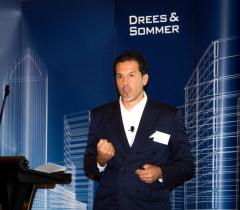Experts Provide Key Considerations For Owners When De And Re-Flagging Hotels
International real estate and construction consultant Drees & Sommer and global law firm, CMS, hosted a recent event in Dubai to shed light on the increasingly popular practice of de and re-flagging in the hotel industry.
The past 18 months have seen some high profile examples of hotels changing their brand, where removing a brand is referred to in the industry as ‘de-flagging,’ and where it has been swapped for another brand – ‘re-flagging’.
Last year, Arne Sorenson, President and CEO of Marriott International, stated the group was de-flagging a number of underperforming Sheraton hotels, eliminating a total of 10,000 rooms from its portfolio between 2017 and 2018, in an earnings report issued by the group in November. Hyatt Hotels and Viceroy Hotels & Resorts have also removed under-performing hotels from their portfolios to focus on upgrading remaining properties to remain competitive.
Key speakers at the event included Filippo Sona, Managing Director of Global Hospitality at Drees & Sommer, Morgan Tuckness, Head of Global Hospitality, Technical Services & Development at Drees & Sommer, John O’Connor, Co-Managing Partner at CMS Dubai and Nick Kramer, Head of Commercial Construction at CMS.
Sona explained the key commercial considerations that may lead to a hotel owner choosing to de-flag or re-flag a property. “Hotel owners may look to de/re-flag for a number of different reasons. Commercially, 47 per cent of owners seek to maximise their profits, while 27.4 per cent choose to de/re-flag as a result of the operator’s inability to achieve desired financial targets. 26.6 per cent of de/re-flaggings occur due to owner-operator relations turning sour.
Many industry experts will argue the real reason owners may look to make this change is in response to an economic slowdown, a desire to become independent or the decision to undergo a brand makeover,” he said.
According to Sona, hotel owners looking to de/re-flag may not realise the high price tag involved and fail to consider the additional costs such as brand adaption, working capital and technical service fees. Losses will likely be incurred during the six to seven month transitional phase as a result of a loss of bookings when an old brand’s system has been shut down and a new brand’s system is still to be activated, in addition to the 15-20 per cent commission fee charged by third-party booking platforms such as Booking.com and Agoda.
“The hard costs when de/re-flagging a hotel can be as high as $5,000-7,000 per key for brand standards adaption and working capital, plus $150,000-300,000 for technical services,” explained Sona.
O’Connor at CMS advised: “As with many recent cases of re-flagging, there is greater demand from owners to have more control over the direction their hotel takes. Owners should consider forward planning and not necessarily decide on the first 20-year Hotel Management Agreement (HMA) that comes through. Consider what might happen over the next 20 years and what flexibility you’d like to build into your project. Start having that conversation from day one because if you don’t, it will become costly and prohibitive for you to take back any control.”
Some other considerations according to the expert panelists:
If a hotel owner is considering de-flagging, it is advised to complete a thorough review of assets and consider how to best leverage themselves as an independent operator. An owner should undergo a complete analysis of annual revenue and profits, occupancy rates and operating costs in order to set realistic targets to meet when proceeding without an operator. Digital tactics have been vital to levelling the playing field for newly independent hotel brands following de-flagging. Owners should also consider the virtual side of their brand long before the legal process begins. This includes developing a cost-effective revenue management system and a website that contains compelling search engine-optimised content.
In the case of re-flagging, capital expenditure is one of the most important considerations, as the costs involved are likely to be huge. Details, such as staff uniforms, brand-aligned interior furnishings and linen will all need to be replaced. If this process is driven by the operator, the owner will often accept a portion of the capital cost of the rebrand providing the operator also contributes. Customer numbers are also likely to decrease as soon as the brand name is removed or as part of the hotel closing during the rebranding exercise.
Sona concludes: “The appetite for owners to explore alternative options for their hotel assets in the Middle East is encouraging and is a sign of the regional market evolving. The decision to re-flag should not be taken lightly and there are many financial, practical and legal factors one needs to consider before undertaking such a process. Careful analysis, planning and a timely execution are crucial to ensuring a smooth transition and maximum value for a hotel asset preparing to changing hands.”










